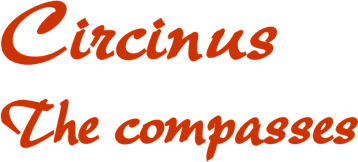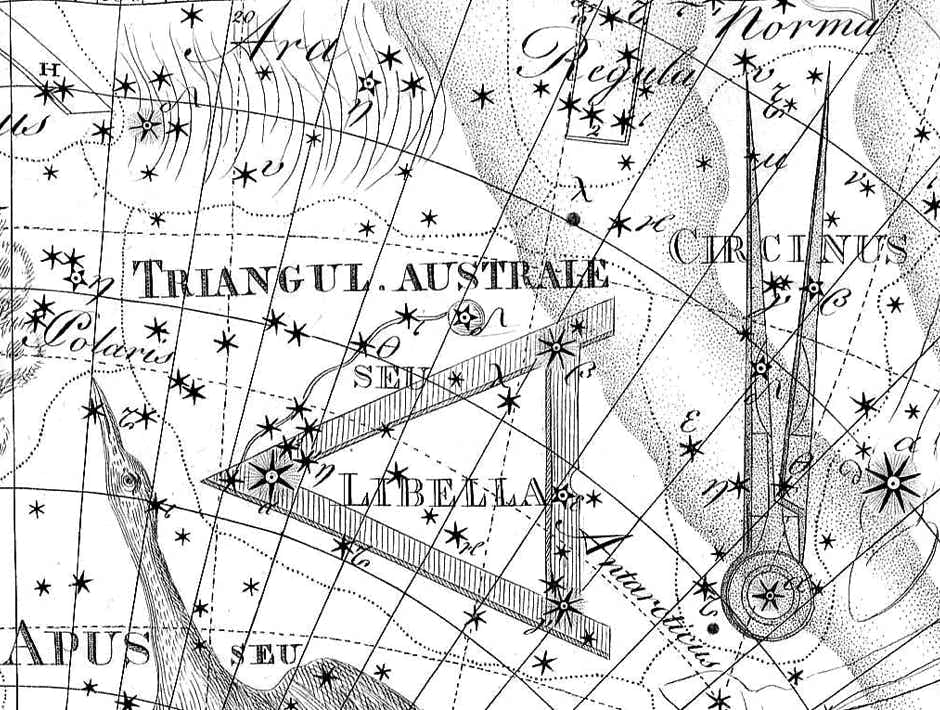
Genitive: Circini
Abbreviation: Cir
Size ranking: 85th
Origin: The 14 southern constellations of Nicolas Louis de Lacaille
An insignificant constellation representing a pair of dividing compasses as used by geometers, draughtsmen, and navigators for drawing circles and measuring distances; they are also known as dividers. Circinus was introduced in the 1750s by the Frenchman Nicolas Louis de Lacaille, who fitted various figures into gaps between the existing constellations of the southern skies. In this case the gap seems to have been almost non-existent, and the compasses are squeezed in their folded position between the forefeet of Centaurus and Triangulum Australe. It is the smallest of Lacaille’s 14 inventions, and the fourth-smallest constellation in the entire sky.
The constellation first appeared under the French name le Compas on Lacaille’s preliminary chart of the southern skies published by the Académie Royal des Sciences in 1756. In his accompanying text Lacaille described it simply as ‘Le Compas du Géomètre’. Its name was Latinized to Circinus on Lacaille’s revised chart of 1763.
The instrument is conveniently placed next to Triangulum Australe (a pre-existing constellation formed by Keyser and de Houtman which Lacaille visualized as a surveyor’s level), and Norma the set square, another of Lacaille’s inventions, thereby forming a related set of instruments.
Circinus from Chart XX of the Uranographia of Johann Bode, with Triangulum Australe to its left and Norma et Regula (the set square and ruler) just off the top of the picture. The bright star near the right margin is Alpha Centauri. For Lacaille’s original depiction, click here.
© Ian Ridpath. All rights reserved




